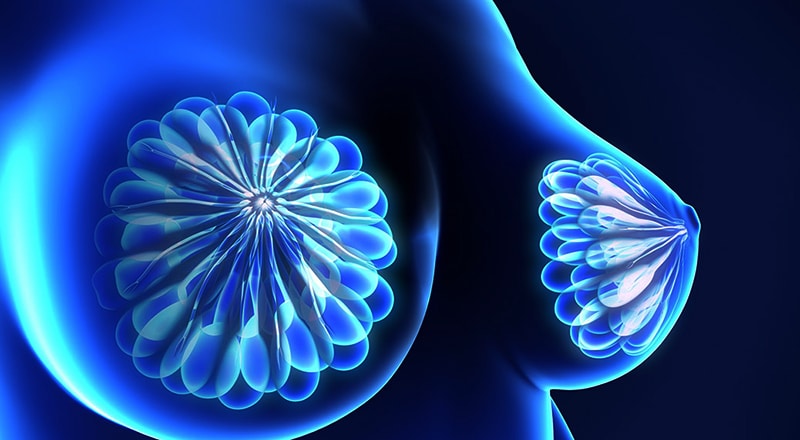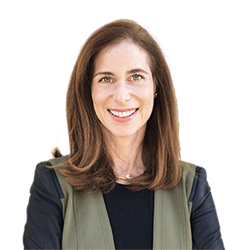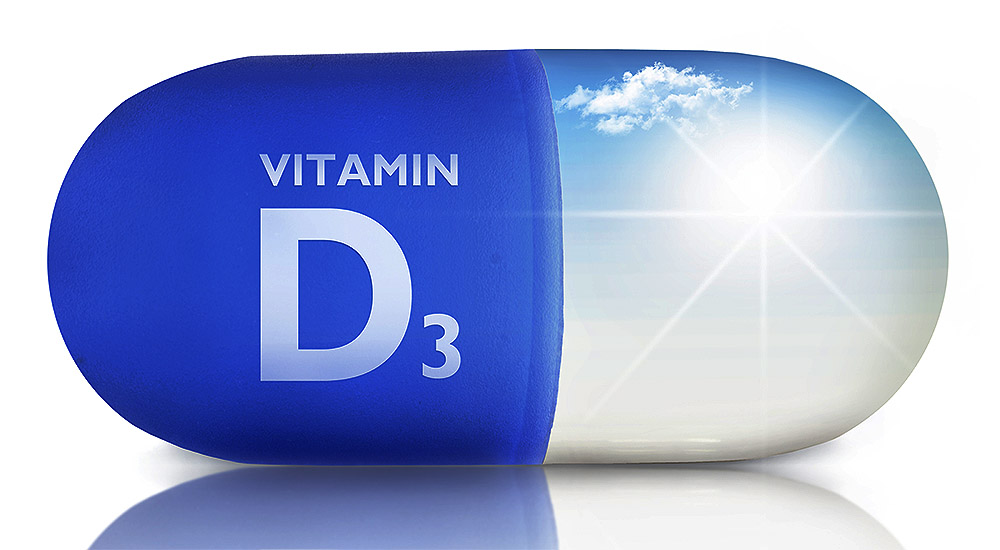Fibrocystic Breast Disease – There is a Cure

I’m going to tell you a story about fibrocystic breasts. This story is a personal story as well as a professional one. In it, I’ll answer these questions and more…
- Is it a disease?
- Does it cause breast cancer?
- Is there a cure?
- Are there natural, non-drug treatment options?
This blog is long. It turns out there was a lot of data I felt was important to know. But, not everyone likes to read and many are just too busy. Therefore I’ve created a summary of the article. You’ll get the compact version and if you want more data on that particular aspect, simply go to that section of the blog. I hope that helps – let me know.
____________________________________________________________________________________________________________
Summary
- Fibrocystic breasts are common, but not normal.
- One’s risk of cancer does increase with fibrocystic breasts.
- The most common symptoms include pain or achiness, swelling, and lumps, typically getting worse around the period.
- Why do certain women develop them? See the section so named below.
- It’s not healthy to be put on the birth control pill for fibrocystic breasts; learn why.
- Learn the liabilities associated with mammograms. Did you know the false positive rate of mammograms is anywhere from 58% to 77%!
- … only one breast cancer death is prevented by mammograms per every 10,000 mammograms!
- Read more in the mammogram section.
- There is a dietary link. See the section so named for more. Nuts and beans were found to be protective.
- Root Cause Medicine treats fibrocystic breasts successfully and naturally – go to that section to learn how.
____________________________________________________________________________________________________________
Statistics
Over half of all women will experience fibrocystic breasts at some time in their lives, making it a very common condition. Are fibrocystic breasts really a “disease”? – No, it’s actually a condition.
Are they “normal”? – No. They may be common, but that doesn’t make them normal.
Do they lead to cancer? – Yes and No. They increase your risk of breast cancer anywhere from two to six-fold, which is why I’m sharing this data. There’s NO need to have an increased risk of breast cancer when you can do so much to reverse fibrocystic breasts.
What are fibrocystic breasts exactly?
Most commonly found in women in their 20s to 50s, fibrocystic breasts are described as lumpy breasts that may or may not be painful. It is often a progressive condition, peaking with women in their 40s. Commonly, increasing discomfort, as well as more noticeable lumps, is present the week before menstruation begins.
The lumps are cysts, hence the name of the condition, filled with fluid. They may feel hard and rubbery or can appear as a single lump, large or small. The thickening of the breast tissue is another appearance of fibrocystic breasts.
Symptoms
Women who experience fibrocystic breasts complain of a variety of symptoms such as:
- Pain and/or tenderness of the breast(s)
- Swelling
- Lumps
- Thickening of breast tissue
- Pain in the armpit
- Aching/burning/itching
The symptoms typically worsen around the menstrual cycle.
Why do certain women develop fibrocystic breasts?
To answer this question we need to review what happens each month within the breast tissue before, during, and after the menstrual cycle.
Each month a woman’s body prepares for pregnancy. There are hormones that buildup the lining of the uterus in addition to hormones that prepare the tissues in the breast for the possibility of lactation. In the breast, hormones stimulate the glandular tissue of the breast, increase blood flow, and influence cell metabolism, increasing cell production. The actions of these hormones can contribute to the feeling of fullness, fluid retention, and discomfort some women feel before their menstrual cycle.
While the buildup of the uterine lining ultimately results in the relatively rapid shedding of that lining during menstruation, if pregnancy does not occur, in the breast a different activity occurs. The stimulated breast cells actually die off and enzymes within the cells break them down or digest them from within. This results in some cell pieces, or fragments, that are further broken down by inflammatory cells nearby. It is believed that the amount of residual cell breakdown fragments and the degree of inflammation, all affect the likelihood of a woman developing fibrocystic breasts.
I realize that can all sound a little complicated, but the solution is not difficult, read on!
Another organ that plays into this condition, and one we specialize in, is an adrenal function. The stress gland, also known as the adrenal gland, has as its ultimate purpose, the survival of your body. Therefore when the body is under stress, the survival mode “kicks in” and the adrenals shunt away from making the sex hormone called progesterone, and instead produces more survival-based, anti-stress hormones. While this an amazing ability of the body to further survival, the result of diminished progesterone production can cause a woman to suffer from the following symptoms:
Anxiety, depression, mood swings, migraine or “other” headaches, poor sleep, heavy periods, cramping, PMS, and yes, fibrocystic breasts.
Therefore, from the root cause medicine approach, it’s critical to not miss the presence of malfunctioning adrenal glands. It’s also important to assess the levels of sex hormones being produced, estrogen, testosterone, and progesterone. A blood test provides this information and is typically performed the week before a woman’s period begins for the most accurate results.
Estrogen dominance, either due to too much estrogen, or insufficient progesterone to balance the estrogen, causes fibrocystic breasts, and many believe it is the chief problem creating the condition.
Estrogen dominance can occur in overweight women who tend to have excess estrogen being produced in their fat cells, too, many women have exogenous estrogen (estrogen coming in from the environment) due to contact with chemicals, and ingesting meat and dairy products from animals given estrogen. All these situations can play into the imbalance of the sex hormones and the development of fibrocystic breasts.
Treatment
Traditional medicine provides a variety of treatments, but ones I don’t recommend:
Monthly self-breast exams: Interestingly, two different studies evaluating close to 400,000 women discovered death rates from breast cancer were the same regardless of whether the women regularly performed self-breast exams or not. Those who did perform self-breast exams underwent twice the number of biopsy operations as compared to women who did not perform self-breast exams.
Is there a “right” way? Some experts recommend not following a strict self-exam routine, but rather getting to know their breast tissue when it’s been deemed “normal” and feeling them regularly for any changes.
Doctors put the woman on birth control pills. This is a very dangerous treatment in my opinion, for several reasons:
- Women placed on the pill can have trouble getting pregnant later once they’re ready to conceive.
- The pill is a chemical “castration” of sorts that often imbalance other hormones and organs of a woman’s body, including the thyroid and adrenal glands with fatigue, weight gain, and hair loss as resulting symptoms.
- The pill has many potentially dangerous side effects, including, interestingly, creating tender breasts, along with increasing your risk of cervical and breast cancer! Such side effects can be avoided with a natural treatment option that excludes synthetic hormones. This is reviewed below.
Women suffering from discomfort from a cyst are often recommended to have a needle aspiration to drain the fluid. This does relieve pressure but it can also remove cells in addition to fluid. Much like a needle biopsy, where a small piece of tissue is removed, it can run the risk of causing malignant cancer cells to break free from a tumor and spread to other areas of the body. According to research performed at the John Wayne Cancer Institute, needle biopsies may increase the spread of cancer by 50% when compared to women whose tumors are removed by excision, or lumpectomies.
Mammograms are often performed on women with fibrocystic breasts. Despite a great deal of evidence citing no benefit and much harm from mammograms (this will be discussed further below) women are recommended to have them annually. There is disagreement as to the age women should commence this procedure.
A study out of Denmark in 2001 was published in The Lancet. The Danish study concluded previous research showing mammogram benefits were flawed and they concluded widespread mammogram screening was unjustified. This was during the same time frame that here in the U.S. it was deemed necessary to widen the use of mammograms to include women over 40 – prior to this, it was only for women over 50.
As far back as 1974, Dr. Pike warned the National Cancer Institute of the findings of a number of specialists: “giving a woman under age 50 a mammogram on a routine basis is close to unethical.”
Mammograms expose the breast to 1,000 times the radiation received from a chest x-ray. Prior to menopause, women’s breasts are very sensitive to radiation and exposure does increase breast cancer risk by 1% with each exposure.
At Mayo Clinic, doctors offer mammograms to women beginning at age 40 and continue testing annually.
The U.S. Preventive Services Task Force mammogram guidelines recommend women begin screening at age 50.
The American Cancer Society Guidelines from 2016 recommend women begin screening at age 45 and continue annually until age 55 where they can switch to every two years or continue annually.
The University of Iowa, Hospitals, and Clinics diagnose fibrocystic breasts through ultrasound or mammogram. They state mammograms are used in “older women” and define such women as in their “mid-thirties and up”.
Dr. Epstein, chair of the Cancer Prevention Coalition, has been an active denouncer of mammograms.
Speaking of the guidelines, he was quoted as saying: “They were conscious, chosen, politically expedient acts by a small group of people for the sake of their own power, prestige, and financial gain, resulting in suffering and death for millions of women. They fit the classification of “crimes against humanity.” He went on to say that screening about 300,000 women between the ages of 40 and 50 with mammogram radiation increased their breast cancer risk by up to 20%.
Did you know the false positive rate of mammograms is anywhere from 58% to 77%! That means your risk for being diagnosed with breast cancer incorrectly is a minimum of 58% of the time, maximally 77% of the time.
The longest and largest study of mammograms published in the British Medical Journal involved 90,000 women, followed for 25 years. The results of the study? Mammograms had ZERO impact on breast cancer mortality.
The rate of death from breast cancer was the same, whether the woman received an annual mammogram or not. Additionally, 22% of “detected” cancers were incorrectly diagnosed, leading to unnecessary treatment – needless chemotherapy, radiation, and surgery.
What’s truly frightening is women believe, due to marketing hype and fear-mongering from the medical profession that mammograms somehow reduce one’s risk of breast cancer and protects them from dying. Women surveyed stated, based on a Cochrane Collaboration review, they could reduce their risk of developing cancer in half by getting a mammogram. This is false!
In fact, only one breast cancer death is prevented by mammograms per every 10,000 mammograms!
Ionizing radiation, found in mammograms, can cause cancers, and the more radiation your breasts receive the more likely you are to develop cancer. This is why beginning mammograms in women under 50 (if at all) is so disturbing. Not only do you run the risk of so many false positives as mentioned above, but if you get stuck in the trap of suspicious-looking breasts, you often are recommended to have more frequent mammograms, putting you at increased risk.
Women with fibrocystic breasts easily fall into this trap because their lumpy breasts can look suspicious. I watched my mother go through this for years. She’d have an annual mammogram, something would look suspicious, her doctor would perform additional mammograms, and then ultimately an ultrasound would declare her “fine”. But the following year the same scenario was repeated, year after year – multiple mammograms and finally an ultrasound. I eventually put my foot down and only allowed them to perform an ultrasound, since it was the definitive test they always defaulted to once multiple mammograms (and dangerous levels of radiation) provided nothing conclusive.
I, too, had fibrocystic breasts, before I normalized them, and I have always insisted on ultrasounds only. You can see my “adventures” with this and the intimidation I received, in an earlier blog here and video here.
Have you experienced for yourself or ever heard a woman complain how painful a mammogram can be? The breast is flattened like a pancake. Such trauma can itself cause cancer to spread, according to researchers. A small tumor can exist but it is encapsulated and not growing. Trauma can break the protective “capsule” and the tumor can then expand and spread.
The good news is that you DO have control, not only of affecting your cancer risk but also having a positive effect on fibrocystic breast disease.
Is There a Dietary Link?
Since breast cancer can take tens of years to develop the Harvard Nurse’s Study published in 2012 asked affected women about their diets when they were younger, hoping to find a dietary link between diet and cancer prevention. They found a nice correlation between fiber intake during adolescence and lowering the risk of precancerous breast disease, including fibrocystic breasts, fibroadenomas, and breast lumps by 25%.
In the land of fiber, nuts were at the top of the list for their protective properties – just two servings per week resulted in a 36% lowered risk profile. Which nuts? Glad you asked! Walnuts, pecans, and peanuts topped that list. Yes, peanuts are not a tree nut, but they were tested and did great. Almonds came in fourth if you’re curious.
Penn State did an interesting study to try to discover what part of walnuts made them the winner when it came to cancer protection. In the study, they fed individuals three varieties of walnuts: whole, just the oil, and just the skin. They then took their blood and dripped it on human breast cancer cells in a petri dish. Only the blood from those eating whole walnuts suppressed the growth of breast cancer. Therefore no need to buy expensive walnut oil, just enjoy the raw variety and chew!
Adolescent intake of fiber and nuts was inversely proportional to their risk of proliferative breast disease. It is for this reason that a strong part of what we do here at the clinic is to support our patients to eat a whole food plant-based diet. If you’d like to see fun grain-free granola, loaded with fiber, check it out here.
Even just one or two handfuls a week dropped risk by 30%. It also lends protection against pancreatic cancer, a very deadly cancer.
And what if those nuts were joined by beans, lentils, soybeans (only organic to avoid GMO please)? That took the risk of developing fibrocystic breast disease down to just a fraction as compared to those consuming the Standard American Diet (SAD). Even better, the protection was strongest for those most in need – the ones with a family history of breast cancer.
The best anti-cancer vegetables, as you’ve often heard me say, come from the crucifer and allium families. The crucifers include broccoli, cauliflower, kale, bok choy, arugula, and many more, while the allium family includes garlic, onions, and the like. If you check out my recipes, you’ll see both families are pretty much always present to one degree or another in all the meals we teach our patients how to cook – now you know why!
The best anti-cancer fruits are cranberries and lemons.
Our Treatment – How Root Cause Medicine successfully treats fibrocystic breasts
- Never forget the basics, by that I mean digestion. If a woman is eating foods she’s sensitive to (common is gluten and dairy) or has a gut that doesn’t function optimally, she will not get the same benefit from the rest of this program. So we begin with diet and the gut.
- Adrenal health – optimizing function of the stress gland. As mentioned above, hormonal balance is impossible to maintain if the adrenal glands are overstressed. This is another “must” for successful treatment.
- A healthy whole foods plant-based diet – as we just mentioned above, reducing inflammatory foods and boosting your body’s cancer-fighting and immune-boosting potential is critical. Including those groups of foods and generally focusing on a whole food plant-based diet will accomplish this goal while reducing contact with dangerous exogenous estrogen found in animal and dairy products.
- Get your sex hormones This is a simple blood test performed at the correct part of your cycle. If you are estrogen dominant or progesterone deficient, natural bio-identical hormone replacement and/or herbs and nutrients that boost hormone production of progesterone can be utilized. Remember how we discussed the need to “clean out” the remaining breast cell remnants at the end of each month? Having adequate levels of the hormone progesterone assists this process. This is a very different approach than that of the synthetic hormones used by mainstream medicine. Need help, contact us.
Personal note: beyond diet and adrenal help, it was the use of natural progesterone (not a topical crème however) that was the final piece of the puzzle in resolving my fibrocystic breasts. It took about 8 months and some soreness in my breasts as the healthy cell turnover occurred, but it was all worth it as breast cancer does run in my family.
- Handle any excess weight or belly weight. Some women can have an acceptable weight on the scale but they still have belly weight which is unhealthy. Whether you have to lose overall body weight or just handle the belly, we have natural programs to get the job done. It’s not as difficult as you’ve found it up until now – give us a call (408-733-0400) and we can discuss our program.
- Exercise – critical for keeping weight under control plus it helps reduce your cancer risk by lowering estrogen levels.
- Balance out any common nutrient deficiencies such as vitamin D and iodine, both of which need to be at normal levels to fight against cancer, by taking a comprehensive multiple vitamin/mineral that contains correct levels. The best we’ve ever found is here.
Note: Iodine is a trace mineral that your breasts use quite a lot to ensure proper cell function.
Well, this is a lot of data, I know. But as a woman who suffered from this painful condition, not to mention the worry of its increased link to breast cancer, I felt it was time I sat down and really shared the truth about fibrocystic breasts and the successful treatment protocol we have created from our root cause medicine approach.
Do you need help with your health?
We have the diagnostic and testing tools, the clinical experience, and a different medical approach to discovering the root cause of why you have the symptoms that are bothering you. As long as you are ready to make some dietary and lifestyle changes, we can help you. We will "hold your hand" through the changes, step by step, to make each step an easy one. We are located in Clearwater, FL, at 1000 S Ft Harrison, at the corner of Ft. Harrison Ave. and Magnolia St. There is plenty of parking space directly accessible from Ft Harrison. If it is not convenient for you to come to Root Cause Medical Clinic, we offer telehealth/telemedicine consultations to residents of certain states. Call us for details.
Contact us for a Consultation – Call 727-335-0400

Dr. Vikki Petersen DC. CCN
Founder of Root Cause Medical Clinic
Certified Functional Medicine Practitioner
Dr Vikki Petersen is a public speaker, author of two books, several eBooks and creates cutting edge content for her YouTube community. Dr Vikki is committed to bringing Root Cause Medicine and its unique approach to restoring health naturally to the world.
Ask a Doctor
Have a health concern you'd like to speak with a doctor about? Or just want clarity on a subject? Ask Us!
Featured Articles
Popular Stories
References:
- Journal of the American Medical Association Surgery May 21, 2014
- Cancer Epidemiology. July 14, 2014
- Reuters. August 22, 2014
- TIME May 22, 2014
- Nature. January 13, 2010
- Cancer Research. November 1, 2006; 66(21): 10357-10364
- Journal of Biological Chemistry March 12, 2007
- British Medical Journal 2012 Sep 6;345:e5660
- European Journal of Cancer Prevention. 2002 Jun;11(3):307-11
- Science News. March 12, 2011
- JAMA Surgery May 21, 2014
- British Medical Journal. 2014 Feb 11;348:g366
- Cochrane Database of Systematic Reviews. 2013 Jun 4;6:CD001877
- The New England Journal of Medicine. April 16, 2014
- Annals of Internal Medicine. 3 April 2007;146(7):516-526


